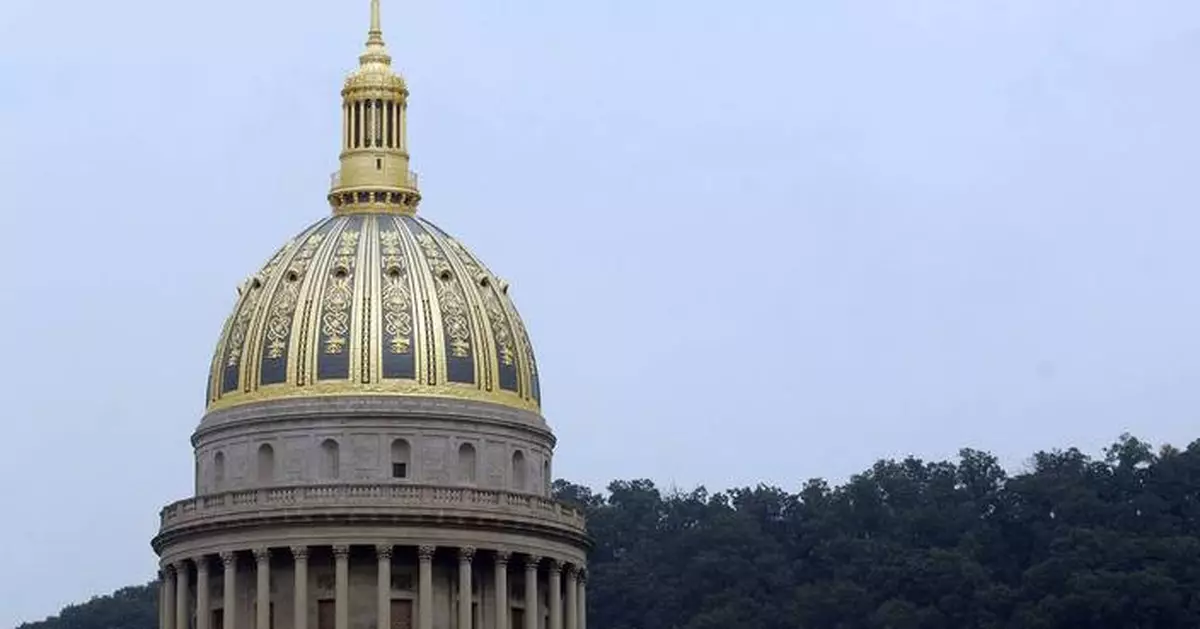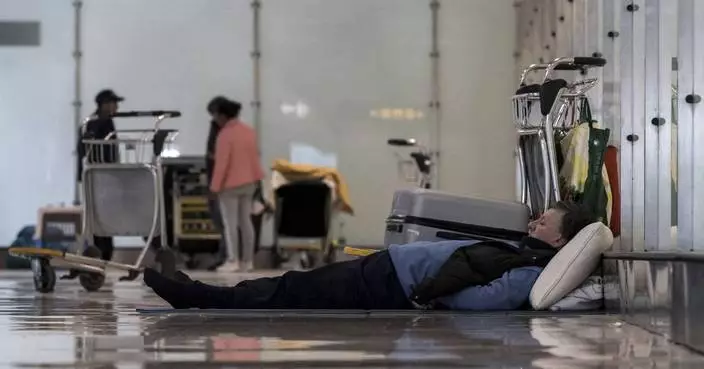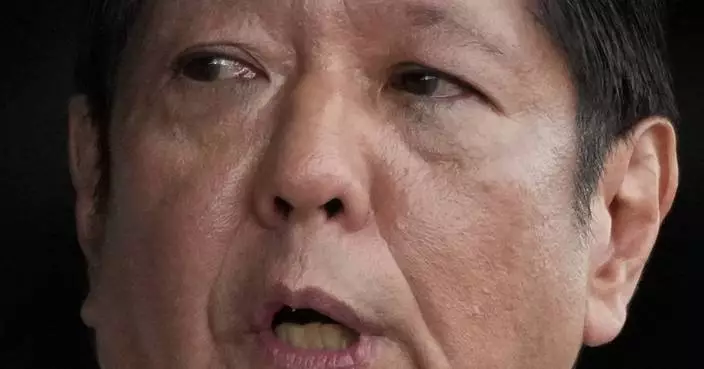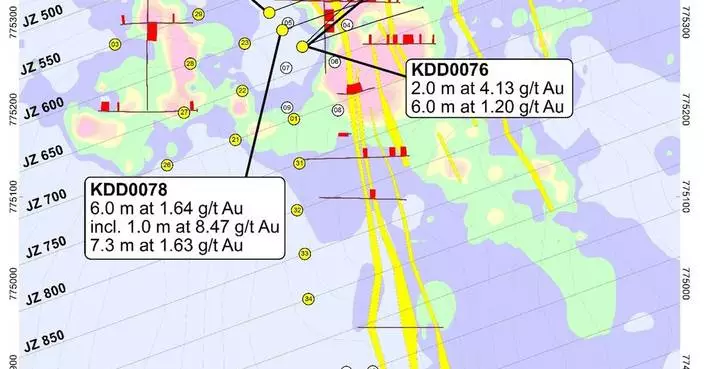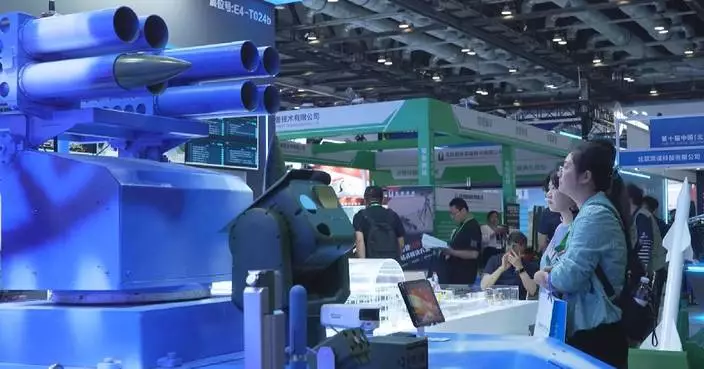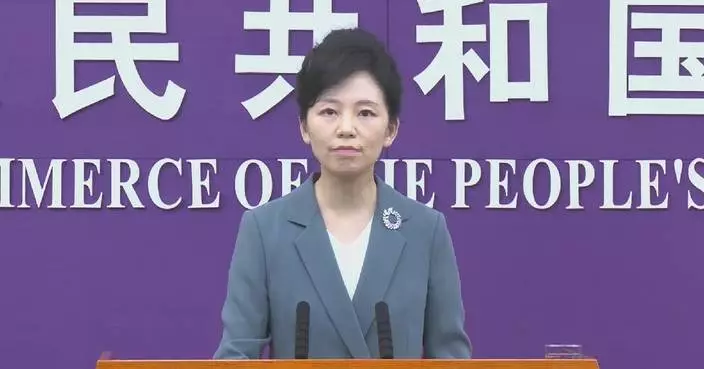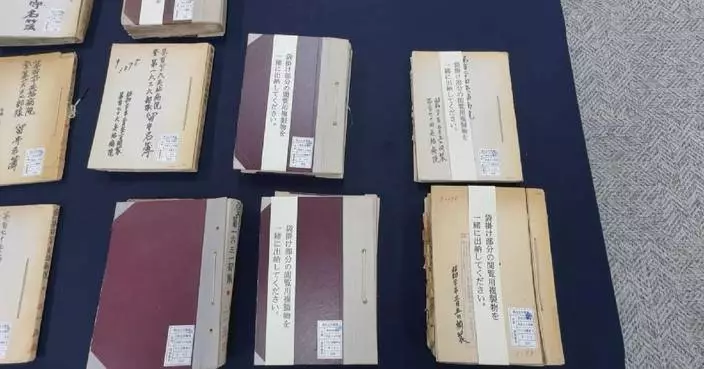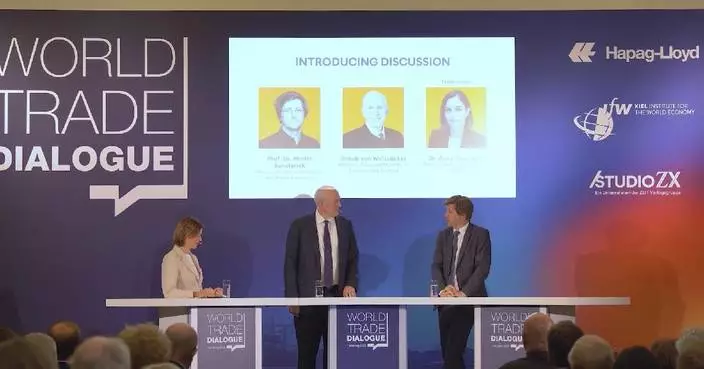CHARLESTON, W.Va. (AP) — A West Virginia delegate-elect was ousted Wednesday while confined to his house on charges related to terroristic threats against his colleagues.
Joseph de Soto, who recently became a Democrat, was elected in November to represent the southern part of Berkeley County in West Virginia's 91st district as a Republican. He was arrested in December after saying God had called on him to kill several members of the Legislature, including House Speaker Roger Hanshaw and House Majority Leader Pat McGeehan, who are both Republicans.
De Soto, 61, was released on bond on Dec. 23 by the Berkeley County Magistrate Court, and was ordered to home confinement while awaiting grand jury deliberations. The terms of his confinement stipulate that he can't contact those he allegedly threatened or have access to any deadly weapons.
The Republican majority House of Delegates vote to declare de Soto’s seat vacant, which means the governor must appoint someone from his district to fill it. Gov.-elect Patrick Morrisey, also a Republican, is scheduled to be inaugurated on Monday to replace outgoing Gov. Jim Justice, who is headed to the U.S. Senate.
The decision followed a tense back-and-forth on the House floor about due process between Democratic Del. Shawn Fluharty and McGeehan, who was explaining the resolution to vacate de Soto's seat.
Fluharty said the state constitution holds that a lawmaker-elect must refuse to take the oath for the seat to be declared vacant, and asked McGeehan if there was any evidence de Soto had refused.
“Look, this guy needs to go — I absolutely agree with that," Fluharty said. “But I want us to do it properly.”
“I think the refusal is that he is incarcerated right now on home confinement,” McGeehan responded.
Later, when Fluharty asked again whether de Soto had had the opportunity to take the oath, McGeehan told him: “You can ask the prison.”
Fluharty noted that several other delegates-elect were unable to be at the Capitol on Wednesday, but there weren't any resolutions calling to vacate their seats. He said he feared a procedural error could lead to legal action.
The proper way to remove de Soto would have been to send a proposal for his expulsion through the House Judiciary Committee, which won't meet until February, Fluharty said.
McGeehan said the other members who weren't present did so because of unplanned circumstances or conflicts that arose. In de Soto’s case, he couldn’t have been at the Capitol Wednesday because he on house arrest.
The disagreement came after Democratic Del. Mike Pushkin made a failed amendment to require that, if declared vacant, de Soto's seat be filled by a Democrat. Although elected as a Republican, de Soto changed his party to Democrat the day before his arrest.
West Virginia's Constitution states that vacancies must be filled by the governor from a list of three people submitted by the party executive committee “of the same political party with which the person holding the office immediately preceding the vacancy was affiliated at the time the vacancy occurred.” Pushkin said in his view, that means a Democrat should be appointed to replace de Soto.
Despite the rejection of Pushkin's amendment, the Berkeley County Democratic Committee sent out a press release shortly afterward asking Democrats in the county who are interested in the position to reach out.
De Soto was elected to his first term in the West Virginia House as a Republican representing part of Berkeley County in the state’s eastern panhandle in November, receiving 72% of the vote in the general election after defeating two other Republicans in the May primary.
If convicted, de Soto could face a maximum fine of $25,000 and three years in prison.

FILE - West Virginia's Capitol dome is shown on Oct. 14, 2005, in Charleston, W.Va. (AP Photo/Jeff Gentner, File)
President Donald Trump President Donald Trump wraps up a Mideast tour in the United Arab Emirates with a breakfast for business leaders and a visit to an interfaith place of worship named for the Abraham Accords he negotiated.
As part of the accords, the UAE and some other countries in the Middle East recognized Israel. Trump departs Abu Dhabi after his visit to the Abrahamic Family House .
During his visit to the region, violence flared in the West Bank, and Gaza. Israeli strikes killed at least 20 people Friday, adding to the more than 120 people who died in recent days.
Here's the latest:
Hostage families called on their government Friday to work with President Trump to release those still held in Gaza.
A statement from the hostages forum, which supports the families said people woke up with “heavy hearts” amid reports of increased attacks across Gaza at the end of Trump’s visit to the Middle East. There were widespread attacks in northern Gaza Friday as Trump was finishing his visit to Gulf States but not Israel.
Israel says about 23 of the hostages are said to be alive.
Israeli Prime Minister had earlier this week called for Gaza scalation
Israeli Prime Minister Benjamin Netanyahu vowed earlier in the week to push ahead with a promised escalation of force in Israel’s war in the Gaza Strip to pursue his aim of destroying the Hamas militant group, which governs Gaza.
The hostage families called on Netanyahu to “join hands” with Trump’s efforts to release the hostages.
“Missing this historic opportunity for a deal to bring the hostages home would be a resounding failure that will be remembered in infamy forever.
Trump is wrapping up his four-day visit to the Middle East, but he’s keeping a close eye on what’s going on back in Washington.
Before heading out Friday morning to the Qasr Al Watan presidential for the final engagements of his trip, the president took to his Truth Social platform to hammer “Radical Left Sleazebags” after Supreme Court justices on Thursday heard more than two hours of arguments debating how the lower courts should handle Trump’s executive order on birthright citizenship.
“I hope the Supreme Court doesn’t fall for the games they play,” Trump added. “The people are with us in bigger numbers than ever before.”
President Donald Trump is kicking off the final day of his Middle East trip with a meeting of U.S. and UAE business executives alongside UAE President Sheikh Mohammed bin Zayed Al Nahyan. Energy, health care, aviation, entertainment and other business leaders will be in attendance to highlight ties between the two countries -- a central focus of Trump’s trip to the region. Trump will then tour the Abrahamic Family House, a complex that houses a church, mosque and synagogue and is a symbol of interfaith tolerance. Trump has encouraged other countries in the region to join the Abraham Accords and recognize Israel, as the UAE did in 2020. The president will then depart back to Washington.
Israeli strikes killed at least 20 people in Gaza on Friday morning, as U.S. President Donald Trump wraps up his Middle East visit.
An Associated Press journalist counted the bodies at the Indonesian Hospital in northern Gaza, where they were brought. Survivors said many people were still under the rubble.
The widespread attacks across northern Gaza come as Trump finishes his visit to Gulf states but not Israel.
There had been widespread hope that Trump’s regional visit could usher in a ceasefire deal or renewal of humanitarian aid to Gaza. An Israeli blockade of the territory is now in its third month.
The Israeli military had no immediate comment on the strikes.
President Donald Trump will make several stops before taking off on Air Force One to end his Mideast trip on Friday.
He’ll attend a business summit in the morning in Abu Dhabi, the capital of the United Arab Emirates.
Trump later will visit the Abrahamic Family House in Abu Dhabi. It is home to a mosque, a church and a synagogue. The UAE built it after diplomatically recognizing Israel in an agreement known as the Abraham Accords, as Christianity, Islam and Judaism are all known as the Abrahamic faiths.
Etihad Airways announced Friday it would purchase 28 wide-body Boeing aircraft during a visit by President Donald Trump to the United Arab Emirates.
Etihad is the government-owned airline of Abu Dhabi that also flies East-West routes like Emirates, the long-haul carrier in neighboring Dubai.
Etihad said in a statement that the sale included “a mix of Boeing 787 and 777X aircraft, powered by GE engines and supported by a services package.”
Boeing did not immediately acknowledge the deal.
Trump was due to address a business conference in Abu Dhabi on Friday, the last day of his Mideast trip that’s also taken him to Saudi Arabia and Qatar, which booked a major Boeing order for its long-haul carrier, Qatar Airways.
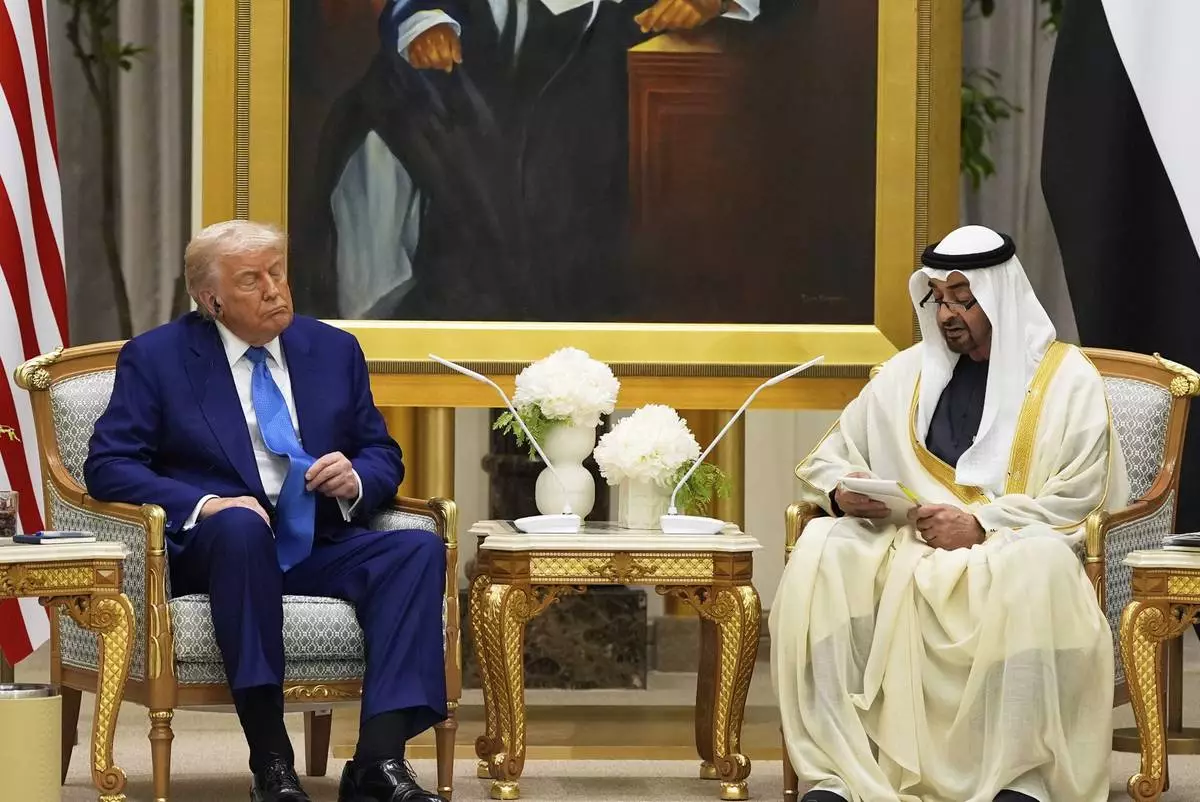
President Donald Trump and UAE President Mohammed bin Zayed Al Nahyan talk at Qasr Al Watan, Thursday, May 15, 2025, in Abu Dhabi, United Arab Emirates. (AP Photo/Alex Brandon)

President Donald Trump and UAE President Mohammed bin Zayed Al Nahyan arrive at Qasr Al Watan, Thursday, May 15, 2025, in Abu Dhabi, United Arab Emirates. (AP Photo/Alex Brandon)

President Donald Trump and Sheikh Khaled Mohammed bin Zayed Al Nahyan, Crown Prince of Abu Dhabi, right, tour the Sheikh Zayed Grand Mosque, Thursday, May 15, 2025, in Abu Dhabi, United Arab Emirates. (AP Photo/Alex Brandon)



